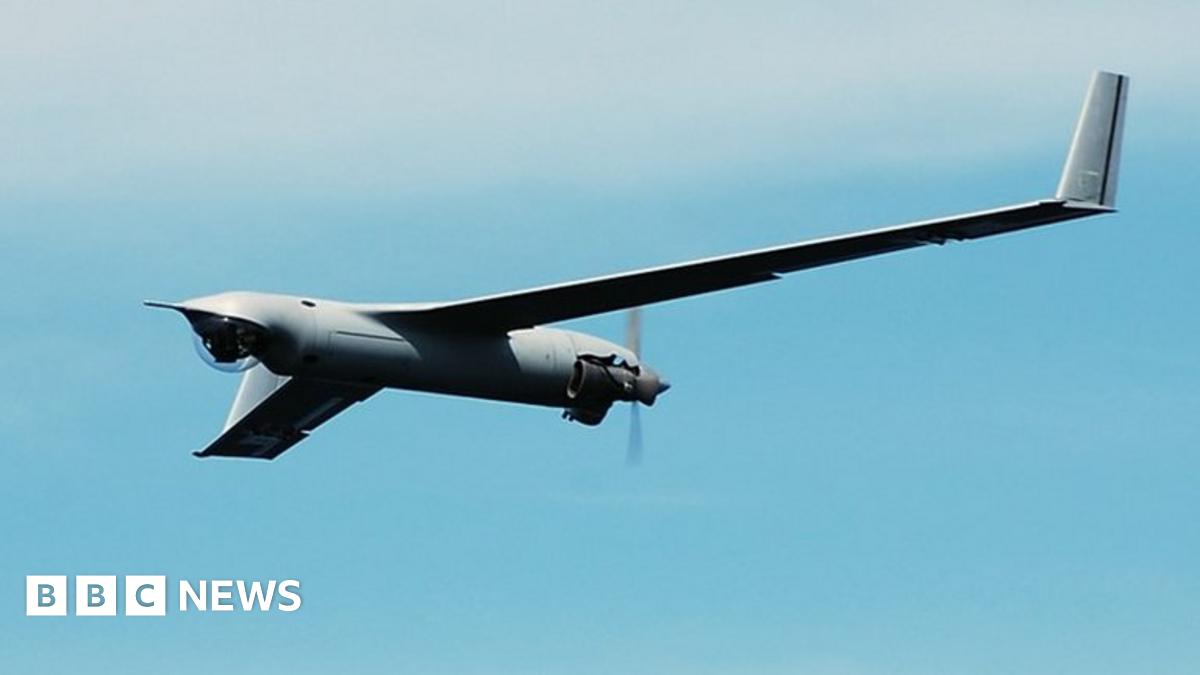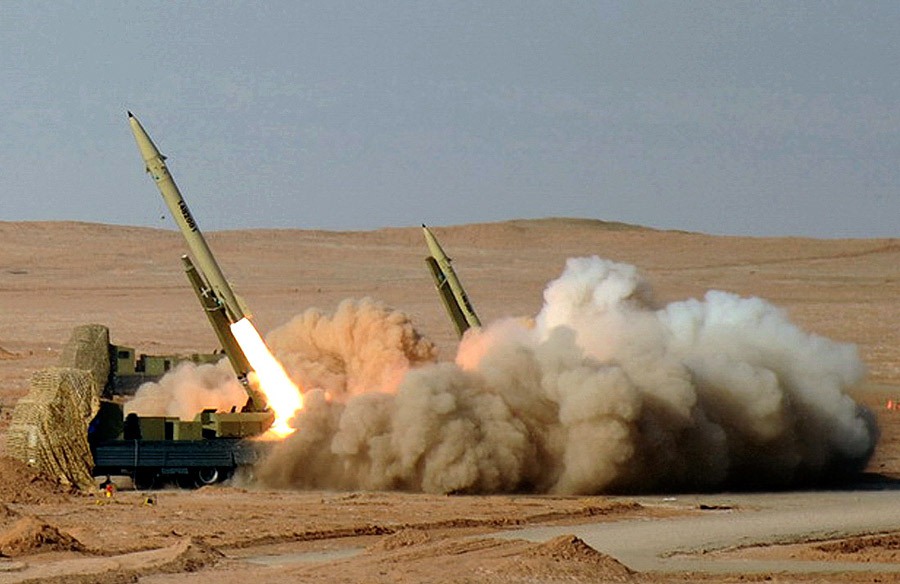Re: Regional geopolitics
Իրանը ԱՄՆ նոր գործընկերն է Կովկասում
Իգոր Մուրադյան
Ուրբաթ, 20 Դեկտեմբերի 2013,
ԱՄՆ այլեւս չի կարող սպասել, որ Թուրքիան հրաժարվի իր քմահաճույքներից եւ վերադառնա «լոյալ գոտի», որը վաղուց գոյություն չունի: Գաղափարը հնարավորինս հստակ ձեւակերպելով, կարելի է ասել, որ ինչ որ մեկը պետք է զբաղեցնի Թուրքիայի տեղը, որպես Արեւմտյան հանրության գործընկեր:
Բացի նման գործընկեր դառնալու ցանկությունից, պետք է նաեւ ունենալ ռեսուրսներ ու հավակնություններ: Մերձավոր Արեւելքի ոչ մի պետություն, բացի Իրանից, ի վիճակի չէ կատարել տվյալ գործընկերային խնդիրները:
Իրանը որպես տարածաշրջանի առաջնահերթ գործընկեր լիովին տեղավորվում է ուժերի հավասարակշռության հայեցակարգում, որը լատենտ, սակայն համառորեն դավանում է ԱՄՆ-ը վերջին տարիներին: Այդ հայեցակարգի նշանակությունը միայն այն չէ, որ առավելագույնս բխում է ԱՄՆ շահերից: Այն կարող է ադապտացվել ԱՄՆ ցանկացած հաջորդ վարչակազմի կողմից:
Եթե երկու տասնամյակի ընթացքում ԱՄՆ փորձում էր իրականացնել «կառավարելի եռանկյունու» գաղափարը, այսինքն՝ Թուրքիա-Իրան-Ռուսաստան, ներկայում փորձ է կատարվում Իրանի հետ գործընկերության հիման վրա վերանայել առաջնահերթությունները տարածաշրջաններում: Իհարկե, իրանա-ամերիկյան հարաբերությունները դեռ կբախվեն երկու երկրների հզոր խմբերի դիմակայությանը, սակայն որոշ ուղղություններով արդեն կան պայմանավորվածություններ:
Ինչ վերաբերում է Հարավային Կովկասին, այստեղ գործընթացներն ավելի արագ են զարգանում, քան ենթադրվում էր: Իրանի ազդեցության աճը թույլ կտա որոշ չափով դուրս մղել Ռուսաստանին ու Թուրքիային: Վրաստանի եւ Հայաստանի վերաբերյալ ոչ մի խնդիր չկա, երկու երկրները բավական շահագրգիռ են Իրանի ազդեցության ուժեղացմամբ, քանի որ բախվել են Թուրքիայի էքսպանսիային՝ Ադրբեջանի հետ գործակցությամբ: Սակայն ԱՄՆ-ն եւ Մեծ Բրիտանիան շահագրգռված են Իրանի ու Ադրբեջանի միջեւ հարաբերությունների բարելավմամբ:
Թուրքիային զսպելու ուղղությամբ ռուս-ամերիկյան պայմանավորվածությունները պարզվեց անհնար են, թեեւ առկա էին համալսարանական բնույթի առանձին քաղաքագետների մտքեր: Ռուսաստանը մշտապես ցանկացել է գրավել առավել նշանակալի դիրքեր եւ թերեւս որոշել է, որ կարիք չկա ԱՄՆ-ի հետ համագործակցության մեջ ուշադրություն դարձնել նման հնարավորության վրա, ձգտելով ստանալ զգալիորեն ավելի մեծ ու բարդ խաղում:
ԱՄՆ եւ Իրանի մերձեցումը ամերիկացիների մտահղացմամբ կհանգեցնի Թուրքիայի հավակնությունների նվազմանը եւ Արեւմուտքի առջեւ Թուրքիայի առավել «բացվելուն»: Դա իհարկե տրամաբանական է: Սակայն կարող է տեղի ունենալ նաեւ այն, որ այդ իրավիճակում Իրանն ու Թուրքիան կնախընտրեն սեփական խաղը:
Իրանցի մեկնաբանների կարծիքով, Իրանը չպետք է բաց թողնի Մերձավոր Արեւելքի եւ այլ տարածաշրջանների պետությունների հետ նոր խաղ կառուցելու հնարավորությունը, ԱՄՆ հետ հարաբերությունների բարելավման պայմաններում: Իրանցիները փորձում են սեփական խաղը ներկայացնել որպես ավելի բարդ, քան կա իրականում, քանի որ Իրանի «տարածաշրջանային նոր քաղաքականությունը» դեռ կառուցված չէ, եւ առայժմ հասկանալի չէ, թե որքանով տարածաշրջանների պետությունները կընդունեն Իրանի նախաձեռնությունները:
Բոլորին հասկանալի է, որ ամերիկացիներին առայժմ քիչ են հետաքրքրում Մերձավոր Արեւելքի պետությունների հետ Իրանի հարաբերությունները, եւ հետաքրքրություն է առաջացնում այն ամենը, ինչ վերաբերում է իրանա-ռուսական հարաբերություններին: Նույնիսկ իրանա-թուրքական հարաբերությունները ԱՄՆ դիտարկում է՝ ելնելով Ռուսաստանի ուղղությամբ մտադրություններից:
Լիովին հասկանալի է, որ ԱՄՆ-ն փորձում է բարդացնել տարածաշրջանային խաղը, թեեւ ամերիկյան վերլուծաբանները պնդում են, թե իրավիճակի բարդացումը տեղի է ունենում ինքնաբերաբար: Սակայն եթե նույնիսկ ենթադրենք, որ ԱՄՆ-ն այս տարածաշրջաններում իր քաղաքականության զարգացման հարցում չունի ավարտուն հայեցակարգ, սպասումները կարող են կապված լինել միայն ԱՄՆ աջակցությամբ Իրանի դիրքերի ուժեղացման հետ՝ Ռուսաստանի ու Թուրքիայի անհիմն ուժեղ դիրքերը հաղթահարելու նպատակով:
Հարավային Կովկասը մի քանի տարի առաջ կանգնած էր ճահճացման հեռանկարի առաջ, սակայն ներկայում առաջանում է լիովին նոր հեռանկար՝ դառնալու քաղաքական բավական ակտիվ գործընթացների ասպարեզ, ոչնչով չզիջելով Մերձավոր Արեւելքի առանձին ենթաշրջաններին:
Հետաքրքիր է, թե ինչպես կվերաբերվեն ամերիկյան այդ խաղին Եվրոպական միությունը եւ եվրոպական խոշոր պետությունները: Եվրոպացիները փորձում են Հարավային Կովկասը դիտարկել որպես եվրոպական անվտանգության տարր, սակայն այդ ճանապարհին գլխավոր խոչընդոտը Ռուսաստանն է: Եվրոպան Արեւելյան նախագծից հետո պատրաստ է ԱՄՆ ցանկացած նախաձեռնությունների, Ռուսաստանի էքսպանսիան հաղթահարելու համար: Ռուսաստանի ագրեսիվ-էքսպանսիոնիստական քաղաքականությունն իրենով ծածկել է Թուրքիային եւ շեղել ուշադրությունը նրանից, որպես պետության, որի քաղաքականությունը որոշակի սպառնալիքներ է ներկայացնում Արեւմուտքի շահերի համար:
Ավելի վաղ ենթադրվում էր, որ Հայաստանի միջազգային մեկուսացման եւ վասալացման պայմաններում ԱՄՆ-ն եւ ՆԱՏՕ-ն կգերադասեն Կովկասյան-կասպիական տարածաշրջանում խաղադրույք կատարել Ադրբեջանի վրա: Ներկայում, իրանական սցենարները մոտեցնում են ընկալումը, որ Ադրբեջանը շուտով կհայտնվի միջազգային ուշադրության կենտրոնում, եւ նրա վրա ազդեցությունը կախված կլինի Հարավային Կովկասում այս կամ այն տերության ազդեցությունից:
ԱՄՆ-ն փորձում է վերակենդանացնել Հայաստանի ինքնիշխանությունը, նրան ներգրավելով իր տարածաշրջանային խաղերի մեջ, հաստատելով Հայաստանի եւ ՆԱՏՕ-ի համագործակցության հարցում իր շահագրգռվածությունը: ԱՄՆ կցանկանար Ադրբեջանը տեսնել որպես ասպարեզ, որտեղ տեղի են ունենում միջազգային բնույթի քաղաքական ակտիվ իրադարձություններ, սակայն ոչ քաղաքական ակտիվ խաղացողի դերում: Այդ պատճառով ամերիկացիներին պետք են հուսալի հակակշիռներ տարածաշրջանում, որի շահերը կապված են ԱՄՆ շահերի ու մտադրությունների հետ:
Եվրոպացիների որոշ պասիվությունը եւ Հայաստանը շրջափակելու եւ այն մոռացության տալու մասով ունեցած որոշումները ձեռնտու չեն ամերիկացիներին: Վաշինգտոնն, անկասկած, փորձում է ձեւավորել աշխարհքաղաքական նոր հորիզոնական՝ Բալկաններ-Սեւ ծով-Վրաստան-Հայաստան-Ադրբեջան-Իրան-Օրմուզի ծոց: Սակայն դա միայն առաջին փորձն է, եւ լիովին սպասելի է, որ Հայաստանը հեշտ դուրս կմնա այս կառուցվածքից, ինչպես հաջողությամբ դուրս մնաց Եվրոպական միության հետ ինտեգրվելու ծրագրից:
- See more at: http://www.lragir.am/index/arm/0/com....gRN1lP5e.dpuf
Իրանը ԱՄՆ նոր գործընկերն է Կովկասում
Իգոր Մուրադյան
Ուրբաթ, 20 Դեկտեմբերի 2013,
ԱՄՆ այլեւս չի կարող սպասել, որ Թուրքիան հրաժարվի իր քմահաճույքներից եւ վերադառնա «լոյալ գոտի», որը վաղուց գոյություն չունի: Գաղափարը հնարավորինս հստակ ձեւակերպելով, կարելի է ասել, որ ինչ որ մեկը պետք է զբաղեցնի Թուրքիայի տեղը, որպես Արեւմտյան հանրության գործընկեր:
Բացի նման գործընկեր դառնալու ցանկությունից, պետք է նաեւ ունենալ ռեսուրսներ ու հավակնություններ: Մերձավոր Արեւելքի ոչ մի պետություն, բացի Իրանից, ի վիճակի չէ կատարել տվյալ գործընկերային խնդիրները:
Իրանը որպես տարածաշրջանի առաջնահերթ գործընկեր լիովին տեղավորվում է ուժերի հավասարակշռության հայեցակարգում, որը լատենտ, սակայն համառորեն դավանում է ԱՄՆ-ը վերջին տարիներին: Այդ հայեցակարգի նշանակությունը միայն այն չէ, որ առավելագույնս բխում է ԱՄՆ շահերից: Այն կարող է ադապտացվել ԱՄՆ ցանկացած հաջորդ վարչակազմի կողմից:
Եթե երկու տասնամյակի ընթացքում ԱՄՆ փորձում էր իրականացնել «կառավարելի եռանկյունու» գաղափարը, այսինքն՝ Թուրքիա-Իրան-Ռուսաստան, ներկայում փորձ է կատարվում Իրանի հետ գործընկերության հիման վրա վերանայել առաջնահերթությունները տարածաշրջաններում: Իհարկե, իրանա-ամերիկյան հարաբերությունները դեռ կբախվեն երկու երկրների հզոր խմբերի դիմակայությանը, սակայն որոշ ուղղություններով արդեն կան պայմանավորվածություններ:
Ինչ վերաբերում է Հարավային Կովկասին, այստեղ գործընթացներն ավելի արագ են զարգանում, քան ենթադրվում էր: Իրանի ազդեցության աճը թույլ կտա որոշ չափով դուրս մղել Ռուսաստանին ու Թուրքիային: Վրաստանի եւ Հայաստանի վերաբերյալ ոչ մի խնդիր չկա, երկու երկրները բավական շահագրգիռ են Իրանի ազդեցության ուժեղացմամբ, քանի որ բախվել են Թուրքիայի էքսպանսիային՝ Ադրբեջանի հետ գործակցությամբ: Սակայն ԱՄՆ-ն եւ Մեծ Բրիտանիան շահագրգռված են Իրանի ու Ադրբեջանի միջեւ հարաբերությունների բարելավմամբ:
Թուրքիային զսպելու ուղղությամբ ռուս-ամերիկյան պայմանավորվածությունները պարզվեց անհնար են, թեեւ առկա էին համալսարանական բնույթի առանձին քաղաքագետների մտքեր: Ռուսաստանը մշտապես ցանկացել է գրավել առավել նշանակալի դիրքեր եւ թերեւս որոշել է, որ կարիք չկա ԱՄՆ-ի հետ համագործակցության մեջ ուշադրություն դարձնել նման հնարավորության վրա, ձգտելով ստանալ զգալիորեն ավելի մեծ ու բարդ խաղում:
ԱՄՆ եւ Իրանի մերձեցումը ամերիկացիների մտահղացմամբ կհանգեցնի Թուրքիայի հավակնությունների նվազմանը եւ Արեւմուտքի առջեւ Թուրքիայի առավել «բացվելուն»: Դա իհարկե տրամաբանական է: Սակայն կարող է տեղի ունենալ նաեւ այն, որ այդ իրավիճակում Իրանն ու Թուրքիան կնախընտրեն սեփական խաղը:
Իրանցի մեկնաբանների կարծիքով, Իրանը չպետք է բաց թողնի Մերձավոր Արեւելքի եւ այլ տարածաշրջանների պետությունների հետ նոր խաղ կառուցելու հնարավորությունը, ԱՄՆ հետ հարաբերությունների բարելավման պայմաններում: Իրանցիները փորձում են սեփական խաղը ներկայացնել որպես ավելի բարդ, քան կա իրականում, քանի որ Իրանի «տարածաշրջանային նոր քաղաքականությունը» դեռ կառուցված չէ, եւ առայժմ հասկանալի չէ, թե որքանով տարածաշրջանների պետությունները կընդունեն Իրանի նախաձեռնությունները:
Բոլորին հասկանալի է, որ ամերիկացիներին առայժմ քիչ են հետաքրքրում Մերձավոր Արեւելքի պետությունների հետ Իրանի հարաբերությունները, եւ հետաքրքրություն է առաջացնում այն ամենը, ինչ վերաբերում է իրանա-ռուսական հարաբերություններին: Նույնիսկ իրանա-թուրքական հարաբերությունները ԱՄՆ դիտարկում է՝ ելնելով Ռուսաստանի ուղղությամբ մտադրություններից:
Լիովին հասկանալի է, որ ԱՄՆ-ն փորձում է բարդացնել տարածաշրջանային խաղը, թեեւ ամերիկյան վերլուծաբանները պնդում են, թե իրավիճակի բարդացումը տեղի է ունենում ինքնաբերաբար: Սակայն եթե նույնիսկ ենթադրենք, որ ԱՄՆ-ն այս տարածաշրջաններում իր քաղաքականության զարգացման հարցում չունի ավարտուն հայեցակարգ, սպասումները կարող են կապված լինել միայն ԱՄՆ աջակցությամբ Իրանի դիրքերի ուժեղացման հետ՝ Ռուսաստանի ու Թուրքիայի անհիմն ուժեղ դիրքերը հաղթահարելու նպատակով:
Հարավային Կովկասը մի քանի տարի առաջ կանգնած էր ճահճացման հեռանկարի առաջ, սակայն ներկայում առաջանում է լիովին նոր հեռանկար՝ դառնալու քաղաքական բավական ակտիվ գործընթացների ասպարեզ, ոչնչով չզիջելով Մերձավոր Արեւելքի առանձին ենթաշրջաններին:
Հետաքրքիր է, թե ինչպես կվերաբերվեն ամերիկյան այդ խաղին Եվրոպական միությունը եւ եվրոպական խոշոր պետությունները: Եվրոպացիները փորձում են Հարավային Կովկասը դիտարկել որպես եվրոպական անվտանգության տարր, սակայն այդ ճանապարհին գլխավոր խոչընդոտը Ռուսաստանն է: Եվրոպան Արեւելյան նախագծից հետո պատրաստ է ԱՄՆ ցանկացած նախաձեռնությունների, Ռուսաստանի էքսպանսիան հաղթահարելու համար: Ռուսաստանի ագրեսիվ-էքսպանսիոնիստական քաղաքականությունն իրենով ծածկել է Թուրքիային եւ շեղել ուշադրությունը նրանից, որպես պետության, որի քաղաքականությունը որոշակի սպառնալիքներ է ներկայացնում Արեւմուտքի շահերի համար:
Ավելի վաղ ենթադրվում էր, որ Հայաստանի միջազգային մեկուսացման եւ վասալացման պայմաններում ԱՄՆ-ն եւ ՆԱՏՕ-ն կգերադասեն Կովկասյան-կասպիական տարածաշրջանում խաղադրույք կատարել Ադրբեջանի վրա: Ներկայում, իրանական սցենարները մոտեցնում են ընկալումը, որ Ադրբեջանը շուտով կհայտնվի միջազգային ուշադրության կենտրոնում, եւ նրա վրա ազդեցությունը կախված կլինի Հարավային Կովկասում այս կամ այն տերության ազդեցությունից:
ԱՄՆ-ն փորձում է վերակենդանացնել Հայաստանի ինքնիշխանությունը, նրան ներգրավելով իր տարածաշրջանային խաղերի մեջ, հաստատելով Հայաստանի եւ ՆԱՏՕ-ի համագործակցության հարցում իր շահագրգռվածությունը: ԱՄՆ կցանկանար Ադրբեջանը տեսնել որպես ասպարեզ, որտեղ տեղի են ունենում միջազգային բնույթի քաղաքական ակտիվ իրադարձություններ, սակայն ոչ քաղաքական ակտիվ խաղացողի դերում: Այդ պատճառով ամերիկացիներին պետք են հուսալի հակակշիռներ տարածաշրջանում, որի շահերը կապված են ԱՄՆ շահերի ու մտադրությունների հետ:
Եվրոպացիների որոշ պասիվությունը եւ Հայաստանը շրջափակելու եւ այն մոռացության տալու մասով ունեցած որոշումները ձեռնտու չեն ամերիկացիներին: Վաշինգտոնն, անկասկած, փորձում է ձեւավորել աշխարհքաղաքական նոր հորիզոնական՝ Բալկաններ-Սեւ ծով-Վրաստան-Հայաստան-Ադրբեջան-Իրան-Օրմուզի ծոց: Սակայն դա միայն առաջին փորձն է, եւ լիովին սպասելի է, որ Հայաստանը հեշտ դուրս կմնա այս կառուցվածքից, ինչպես հաջողությամբ դուրս մնաց Եվրոպական միության հետ ինտեգրվելու ծրագրից:
- See more at: http://www.lragir.am/index/arm/0/com....gRN1lP5e.dpuf







Comment